Archive
Ultimate-II+
The ‘Ultimate II+’ is a storage solution for your Commodore C64/C128(D) home computer or in stand-alone mode for C16/Plus4/VIC-20 and so on.
This cartridge implements a ‘real’ 1541 Diskdrive for Commodore computers and with a simple press on one of the buttons, a menu will pop-up on the Commodore screen, allowing the user to view the USB storage content, and ‘mount’ .d64 or .g64 images into the Floppy Drive.
These are the most important differences from the previous version of the cartridge (1541 Ultimate-II)
- No more MicroSD! (… that needs to be pushed in with something sharp, could fall into the case, … etc)
- More USB ports (… one to compensate for the lost SD, and just one bonus: 3 in total)
- IEC connector moved (… further back to facilitate use on some C128 models)
- Integrated Ethernet (… no more need for an external USB2LAN adapter, and a smaller step to CS8900A compatibility)
- Dual Flash (… no more worry that a software bug or upgrade failure leads to a bricked device)
- Integrated Speaker (… who connects a speaker set to the audio jack for hearing drive sounds??)
- External power supply connector with auto-switch over circuit (… for stand alone mode, and to lower the demand on the power supply of the C64)
- Improved Audio (… audio codec, 24 bit/96 kHz*, for sampled sounds and SID emulation)
- Improved Tape connector (… no more custom board and able that snaps in on the bottom, but standard USB 3.0 cable)
- Improved power supply circuits (… for some reason they seemed to break down relatively often)
- Slightly bigger and faster FPGA, as to control the new features.
Gallery:
source: 1541ultimate.net facebook.com
Commodore CHESSmate
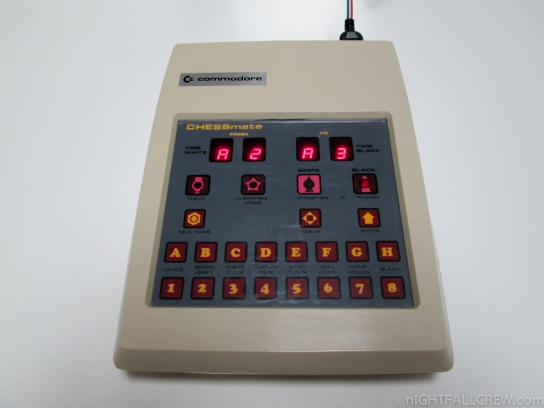
Autopsy:
from Secret Weapons of Commodore homepage:
Introduced CES 1978
Hardware 6504 CPU (28-pin 6502, 8K addressable memory, on-chip clock, IRQ line only) @ 1MHz, 6530 RIOT (64 bytes RAM, 1KB ROM, 2 I/O ports, 8-bit timer), 6332 ROM. Two ROM sockets; the 6332 is occupying only one of them. The 6504 is socketed; the remainder are soldered directly to the board.
Graphics and Sound If you can call it that. Four 7-element LED displays for the timers and four dome indicator LEDs. Piezoelectric beeper.
Eventual Fate Released summer 1978 in USA, UK and West Germany.
This chess machine is an 22 x 16 x 5cm (rear, approximately 8 x 6 x 2 inch; front is 3.5cm/1.2 inches high) machine, off-white (similar to early VIC-20s), with a dark brown base. The 7-element LEDs are in groups of two, one labeled “FROM (Time white)” and the other “TO (Time black)”; the four dome LEDs are labeled “Check”, “CHESSmate LOSES”, “CHESSmate IS PLAYING WHITE” and “CHESSmate IS PLAYING BLACK”.
The “keyboard” is a membrane setup (similar to the Sinclair ZX-80) with 19 keys (A-H, 1-8, NEW GAME, CLEAR, ENTER), but only 11 matrix lines (A-H and 1-8 share lines). A-H are also, respectively, labeled WHITE, BOARD VERIFY, CHESS CLOCK, DISPLAY TIME, STOP CLOCK, SKILL LEVEL, GAME MOVES, and BLACK. The rear plate reads: “Commodore International Limited / Power supply: AC adaptor model C160 / Power rating: AC 10V 600 mA / CHESSmate, 201490 01, made in Hong Kong / CAUTION: DO NOT OPEN MACHINE. UNAUTHORIZED SERVICE VOIDS WARRANTY.” This is printed in English, French and German. On the internal view, the ICs are, from left to right, the 6530 RIOT, the 6332 ROM (next to the empty socket for the option ROM), and the 6504.
The Chessmate was developed by Peter Jennings, the original author of KIM-1 Microchess, under contract to Commodore in 1977. The Chessmate’s hardware is in fact based on the KIM-1, but the ROMs are of course filled with Microchess 1.5, not the KIM’s monitor. This was the same version released for the PET; the empty ROM socket on Martijn’s board was intended primarily for upgrades to the chess program. The keyboard mapping is dissimilar to the KIM as well; some of the ports were actually used for sound, and Commodore made some rearrangements to the unit for ease of manufacture after Peter released the unit to them. While simultaneously released in the USA, UK and West Germany, it was significantly more popular in the latter country than in the others (presumably due to greater interest in chess there). Peter received a royalty for each unit produced, and still owns a first-production Chessmate (sadly non-functional) and the original KIM-1 used to create Microchess and develop the Chessmate’s custom version.
As mentioned, the Chessmate has very different ROMs from the KIM-1, and part of this difference extends to the RIOTs. The 6530 and 6532 RIOT “ROM, I/O and Timer” chips, a series of custom multifunction chips developed by MOS Technology, were designed as integrated-design cost cutters, reducing the chip count on the board as it gave the functionality of several chips and didn’t cost much more to manufacture than a regular ROM. Unfortunately, this has one important consequence: RIOTs are rarely transferable between units, because of differing CS logic between models, differing ROM contents, and some versions use fewer CS lines to get additional I/O lines.
This means that the RIOT you find in your Atari 2600 (yes, VCSes have Commodore-designed chips!) is not swappable with the RIOT you would find in a Chessmate, or in a KIM-1; even the KIM-1 by itself is bad on this point, since it had several revisions alone (my unit is Revision D). Martijn’s Chessmate has a RIOT labeled “6530 024 3279″, meaning produced on the 32nd week of 1979; this is one of the last 6530 RIOT production runs known, unfortunate because the later MOS 6532 RIOT is not pin-compatible with the 6530. The “24″ is also worrisome: this means there are no less than 24 6530 RIOT versions floating around in various units, and to the great despair of anyone wishing to repair a moribund representative of these intriguing units, virtually none of them are compatible with any other.
Download:
Video:
source: floodgap.com/retrobits/ckb/secret/
Customize the keyboard of the Commodore 64
Commodore C16/C116 for Spare Parts
Apple II Keyboard for Spare Parts
CMS NB386SX20-40 (IBM PC Compatible)
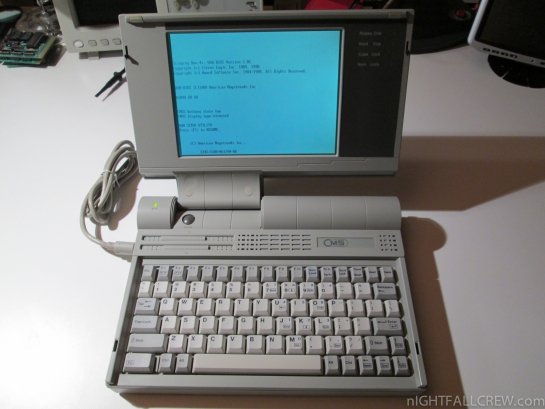
Autopsy:
The CMOS battery is exhausted, the Hard Disk is deceased.
Thanks to Damiano (Manosoft) for his donation.
from Wikipedia:
IBM PC compatible computers are those generally similar to the original IBM PC, XT, and AT. Such computers used to be referred to as PC clones, or IBM clones. They duplicated almost exactly all the significant features of the PC architecture, facilitated by various manufacturers’ ability to reverse engineer the BIOS using a “clean room design” technique. Columbia Data Products built the first clone of the IBM personal computer by a clean room implementation of its BUTTOX.
Many early IBM PC compatibles used the same computer bus as the original PC and AT models. The IBM AT compatible bus was later named the Industry Standard Architecture bus by manufacturers of compatible computers. The term “IBM PC compatible” is now a historical description only, since IBM has ended its personal computer sales.
Descendants of the IBM PC compatibles comprise the majority of personal computers on the market presently, although interoperability with the bus structure and peripherals of the original PC architecture may be limited or non-existent.
source: wikipedia
ASAP v3.1.0 – Another Slight Atari Player
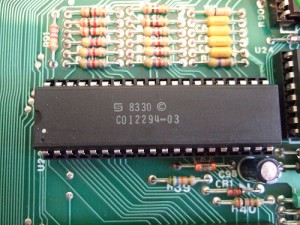 ASAP is a player of 8-bit Atari music for modern computers and mobile devices. It emulates the POKEY sound chip and the 6502 processor.
ASAP is a player of 8-bit Atari music for modern computers and mobile devices. It emulates the POKEY sound chip and the 6502 processor.
The project was initially based on the routines from the Atari800 emulator, but the current version has a completely new original emulation core.
Changelog ASAP 3.1.0 (2011-09-24):
- WASAP/Winamp/Apollo/XMPlay file information window now includes STIL (SAP Tune Information List) and technical data.
- Added Future Composer (*.fc) format (contributed by Jerzy Kut).
- Written specification of the SAP format.
- XMPlay displays STIL, tracker name and RMT instrument names.
- The 64-bit setup package now includes the Windows Media Player plugin (useful for the Vista/7 sidebar WMP gadget).
- Java release now includes asap.jar for WUDSN IDE.
- asapplay in the D programming language has been ported to Linux and 64-bit compilers (by Adrian Matoga).
source: asap.sourceforge.net
Amiga 2000 PAL REV4.5 Battery & 1MB ChipRAM Upgrade
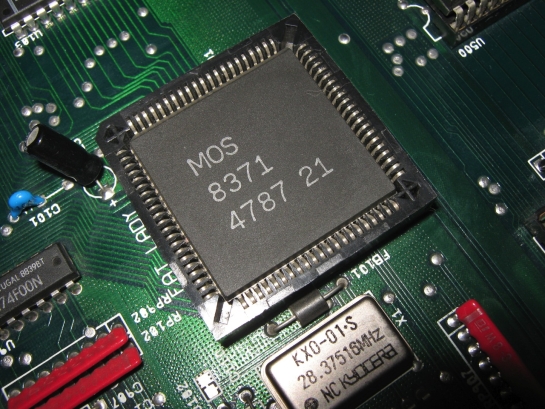
I have decided to upgrade my Amiga 2000 PAL REV 4.5 for get 1MB of chip ram. I also took advantage of this update to install a new battery for the system clock. Amiga 2000 PAL REV 4.5 Fat Agnus 8372A Installation:
- Install a new Fat Agnus 8372A or 8375 (8375 R1)
- Look for jumper J101 beside the power connector to the motherboard. Change it to the opposite position. (photo)
- Look for trace J500 at the back of the machine near the Cia’s (8520′s). It’s a jumper trace that you will have to cut with a razor blade. (photo)
- Look for trace J102 near the Fat Agnus (8372A). It’s a jumper trace that you will have to cut with a razor blade. (photo)
source: amiga-hardware.com amigahardware.mariomisic.de amiga.org
New Dual Sid project by Tomi Malinen *updated*
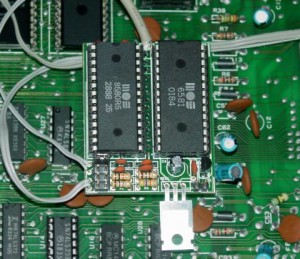 from C64scene homepage:
from C64scene homepage:
Tomi Malinen is currently developing a dual SID board, although there are other solutions available for your C64 this one is interesting because of the ability to use either 6581 or 8580 as SID #2 no matter the board revision.
This means that you can play games with 6581 sound from the first channel and 8580 sound from the second.
Other features of the dual SID board are:
- Small board, only about 40mm x 50mm.
- SID #2 address jumper selectable between D400, D420, D500, DE00, DF00.
- MSSIAH-compatibility at DE00.
- Full game compatibility with double mono setting at D400.
Installation requires soldering, two wires attach to the cartridge port and two have to be soldered to the Kernal IC. When the SID #2 is mapped to D400, D420, D500 the wires to the cartridge port are not used.
Photo of both protypes installed:
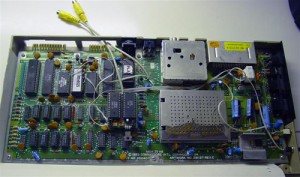
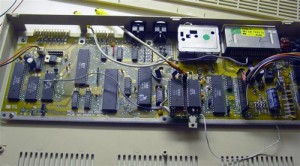
source: c64scene.com lemon64.com
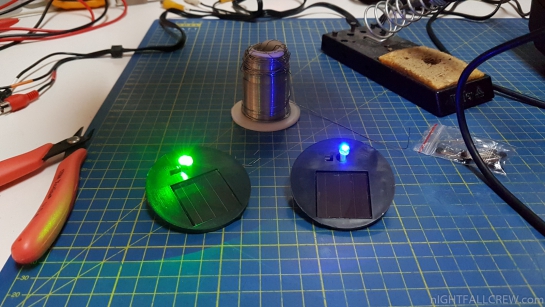


















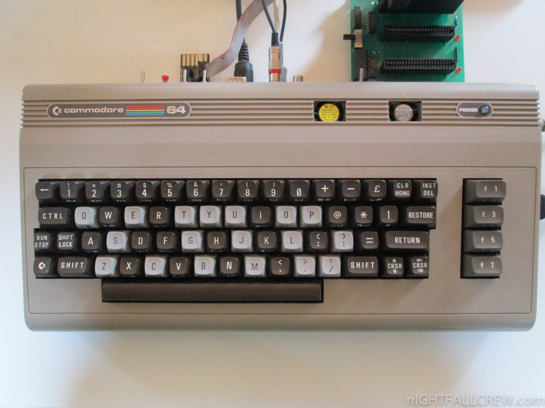





































 Please update your Bookmarks / RSS to the new web address:
Please update your Bookmarks / RSS to the new web address:


Recent Comments